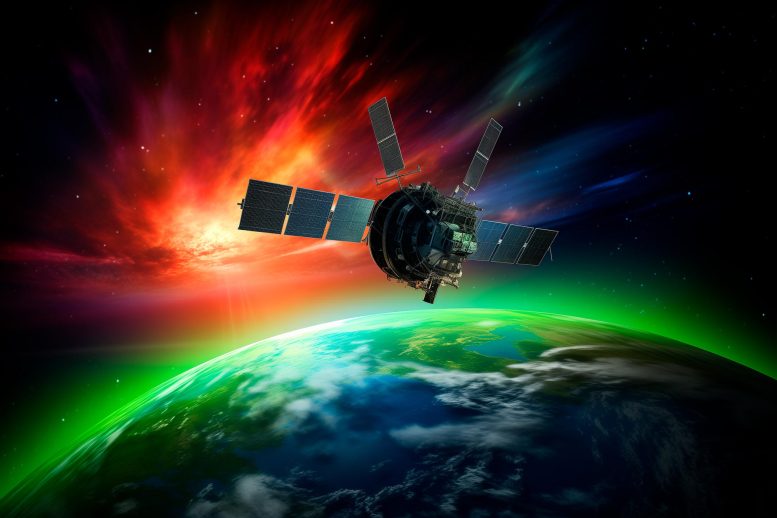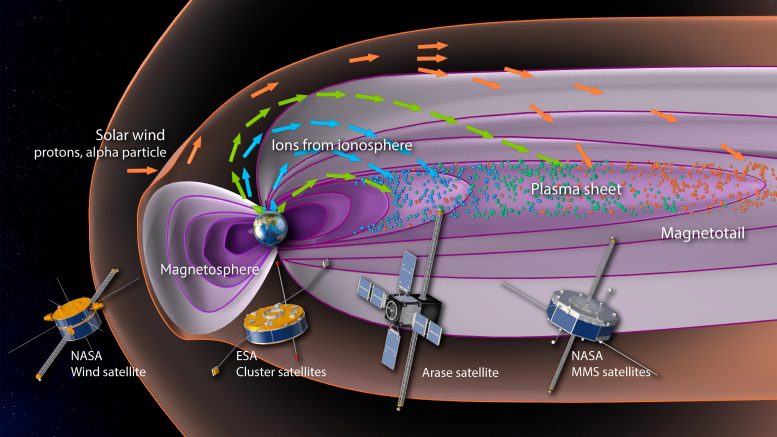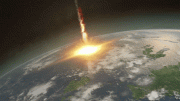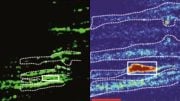
An international research study emphasizes the pivotal role of Earth’s upper atmosphere in the development of large geomagnetic storms. Previously, the significance of Earth’s atmosphere was undervalued. The research sheds light on how Earth’s ionospheric plasma contributes to geomagnetic storms alongside solar influences. Such storms can adversely impact the Earth’s magnetic field, affecting power grids, radio signals, and GPS systems.
Earth’s upper atmosphere plays a crucial role in shaping geomagnetic storms, with both solar and ionospheric plasma contributing to their development, according to a new study.
A new study has revealed the importance of the Earth’s upper atmosphere in determining how large geomagnetic storms develop. The research was conducted by an international team led by researchers from Nagoya University in Japan and the University of New Hampshire in the United States. Their findings reveal the previously underestimated importance of the Earth’s atmosphere.
Understanding the factors that cause geomagnetic storms is important because they can have a direct impact on the Earth’s magnetic field such as causing unwanted currents in the power grid and disrupting radio signals and GPS. This research may help predict the storms that will have the greatest consequences.
The Sun’s Role in Geomagnetic Storms
Scientists have long known that geomagnetic storms are associated with the activities of the Sun. Hot charged particles make up the Sun’s outer layer, the one visible to us. These particles flow out of the Sun creating the ‘solar wind’, and interact with objects in space, such as the Earth. When the particles reach the magnetic field surrounding our planet, known as the magnetosphere, they interact with it. The interactions between the charged particles and magnetic fields lead to space weather, the conditions in space that can affect the Earth, and technological systems such as satellites.

The importance of the Earth’s atmosphere in creating the large storms that affect satellite communications. Credit: ERG Science Team
Magnetotail and Its Importance
An important part of the magnetosphere is the magnetotail. The magnetotail is the part of the magnetosphere that extends away from the Sun, in the direction of the solar wind flow. Inside the magnetotail is the plasma sheet region, which is full of charged particles (plasma). The plasma sheet is important because it is the source region for the particles that get into the inner magnetosphere, creating the current that causes geomagnetic storms.
Research Focus and Findings
Although the importance of the Sun is well known, an international group of researchers aimed to solve the mystery of how much of the plasma in the magnetosphere comes from Earth and how that contribution changes during a geomagnetic storm. The group was led by Lynn Kistler, Nagoya University Designated Professor and University of New Hampshire Professor (cross-appointment), Yoshizumi Miyoshi, Nagoya University Professor, and Tomoaki Hori, Nagoya University Designated Professor.
For their study, they used data from a large geomagnetic storm that happened on September 7-8, 2017. During this time, the Sun released a massive coronal mass ejection that collided with the Earth’s atmosphere, resulting in a huge geomagnetic storm. The impact disrupted the magnetosphere, leading to interference with radio signals, GPS, and precision timing applications.
The researchers retrospectively analyzed the ion transport during this event using data from several space missions, including the NASA/Magnetospheric Multiscale (MMS) mission, the Japanese Arase mission, the ESA/Cluster mission, and the NASA/Wind mission. They distinguished the ions from those of the solar wind and from those of the ionosphere itself.
Using simultaneous measurements of the solar wind composition to track the source changes, they identified substantial changes in the composition and other properties of the near-earth plasma sheet as it developed. These properties of the plasma sheet, such as density, particle energy distribution, and composition, affect the development of the geomagnetic storm.
At the start of the main phase of the storm, the source changed from solar wind-dominated to ionosphere-dominated. “The most important discovery was that at the beginning of the geomagnetic storm, the plasma changed from mostly solar to mostly ionospheric,” explained Kistler. “This shows that the geomagnetic storm drives more outflow from the Earth’s ionosphere, and that the ionospheric plasma can move quickly throughout the magnetosphere.”
“Overall, our research contributes to understanding the development of geomagnetic storms by showing the importance of Earth’s ionospheric plasma,” she continues. “We found compelling evidence that plasmas from not only the Sun but also the Earth drive a geomagnetic storm. In short, the properties of the plasma sheet (the density, the particle energy distribution, the composition) will affect geomagnetic storms, and these properties are different for different sources.”
Reference: “The variable source of the plasma sheet during a geomagnetic storm” by L. M. Kistler, K. Asamura, S. Kasahara, Y. Miyoshi, C. G. Mouikis, K. Keika, S. M. Petrinec, M. L. Stevens, T. Hori, S. Yokota and I. Shinohara, 30 October 2023, Nature Communications.
DOI: 10.1038/s41467-023-41735-3









Be the first to comment on "Magnetic Mischief: Earth’s Upper Atmosphere and Satellite Communication Storms"